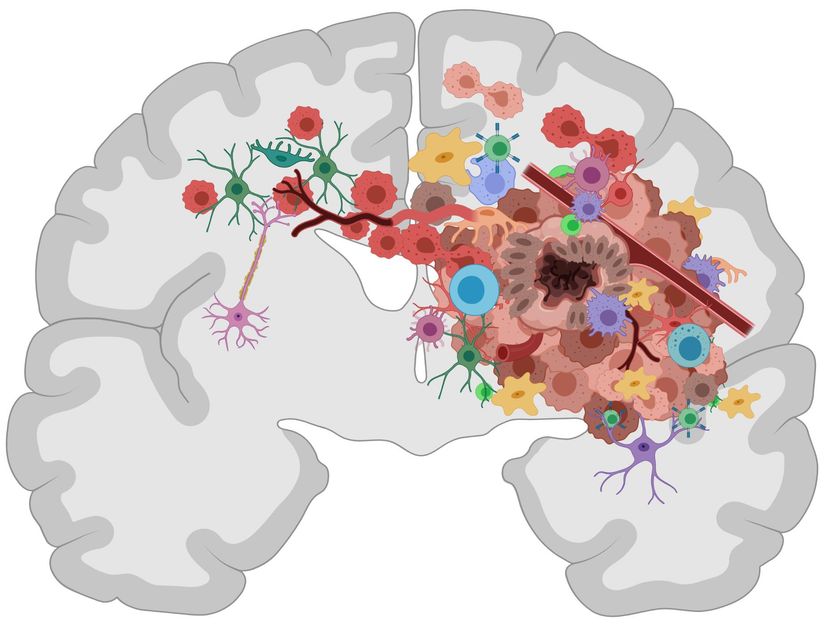Masters of Disguise: New tactics in the hunt for shapeshifting cancers
Unmasking an aggressive cancer with the power to alter its appearance and behaviour in order to evade treatment
glioblastoma (GBM) is a highly aggressive form of cancer that develops in the brain, leaving sufferers with an average survival time of just 12-18 months. This is despite the range of substantial treatments available, including surgical intervention, radiation and chemotherapies. The problem is that with the current tools it is virtually impossible to stop the targeted tumors from growing back.

Luxembourg Institute of Health (LIH)
Based on recent results from the team led by Dr Anna Golebiewska, group leader of the NORLUX Neuro-Oncology Laboratory at the Luxembourg Institute of Health (LIH), the researchers undertook a comprehensive review of the existing literature regarding this problem, with the aim of gaining new insights into potential treatment strategies.
The problem with GBM tumors, is that they are far from straight forward, containing a highly diverse population of interacting cells, including ones that carry stem cell properties. Overcoming this ‘heterogeneity’ within a tumor is difficult enough, but more recently it has been found that GBM cells also contain the ability to change the way they look and function in response to their environment. This ‘plasticity’ of GBM cells combined with inherent resistance to treatment, makes for the perfect enemy, one that can adapt and change to avoid potential threats.
As Yahaya Yabo, lead author of the study, explains: “Cellular states interact dynamically with each other and with the surrounding brain to shape a flexible tumor ecosystem, which enables swift adaptation to external pressure including treatment”. He suggests therefore, that it may be time for a new approach when it comes to targeting GBM. Indeed, if its key strength is the ability to transform and disguise itself, then perhaps this should be the target, potentially allowing other treatments to act on an unmasked foe.
“GBM eradication will require targeting the dynamic states rather than single entities” emphasises Professor Simone Niclou, director of the Department of Cancer Research at LIH. “Further studies are needed to reveal the drivers of plasticity and treatment escape. These should address which of the changes are fast and reversible, and which are retained in tumors long after treatment”. This should help to identify the various escape mechanisms within tumors, potentially enabling more targeted treatment approaches for patients in the future.
Overall, the study reveals a paradigm shift in the way that researchers should approach the treatment of GBM and other aggressive tumors. The remaining question, and one which will doubtless be the subject of much future research, is which of the many potential therapeutic avenues could be effective weapons in their arsenal. As is summarised by Dr Golebiewska: “major research efforts are needed to unravel the molecular mechanisms and regulators of GBM plasticity and generate effective drugs against a moving target”
Original publication
Most read news
Original publication
Organizations
Other news from the department science

Get the life science industry in your inbox
By submitting this form you agree that LUMITOS AG will send you the newsletter(s) selected above by email. Your data will not be passed on to third parties. Your data will be stored and processed in accordance with our data protection regulations. LUMITOS may contact you by email for the purpose of advertising or market and opinion surveys. You can revoke your consent at any time without giving reasons to LUMITOS AG, Ernst-Augustin-Str. 2, 12489 Berlin, Germany or by e-mail at revoke@lumitos.com with effect for the future. In addition, each email contains a link to unsubscribe from the corresponding newsletter.





















































